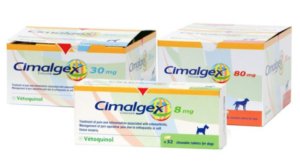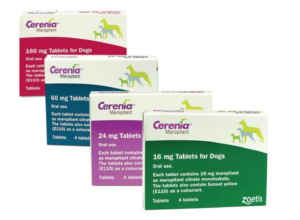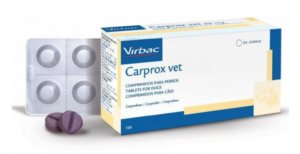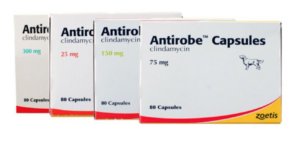Description
Sileo oromucosal gel for dogs is indicated for the alleviation of acute anxiety and fear associated with noise in dogs.
Dosage and administration
Oromucosal use.
The product should be administered onto the oral mucosa between the dog’s cheek and gum at a dose of 125 micrograms/m2. The Sileo oral syringe is capable of delivering the product in 0.25 ml increments. Each increment is shown as one dot on the plunger. The dosing table provides the number of dots to be administered corresponding to the dog’s bodyweight.
The following dosing table provides the dose volume (in dots) to be administered for the corresponding bodyweight. If the dose for the dog is more than 6 dots (1.5 ml), half of the dose should be administered to the oral mucosa on one side of the dog’s mouth and the other half of the dose onto the other side. Do not exceed the recommended dose.
|
Bodyweight of dog (kg)
|
Number of dots
|
|
2.0 – 5.5
|
1 °
|
|
5.6 – 12
|
2 ° °
|
|
12.1 – 20
|
3 ° ° °
|
|
20.1 – 29
|
4 ° ° ° °
|
|
29.1 – 39
|
5 ° ° ° ° °
|
|
39.1 – 50
|
6 ° ° ° ° ° °
|
|
50.1 – 62.5
|
7 ° ° ° ° ° ° °
|
|
62.6 – 75.5
|
8 ° ° ° ° ° ° ° °
|
|
75.6 – 89
|
9 ° ° ° ° ° ° ° ° °
|
|
89.1 – 100
|
10 ° ° ° ° ° ° ° ° ° °
|
New oral syringe set up before first dosing:
|
1. WEAR GLOVES
Wear impermeable disposable gloves when handling the veterinary medicinal product and handling the oral gel.
|
|
|
2. HOLD PLUNGER
Hold the oral syringe so that you can see the dot markings on the oral syringe plunger. Hold the plunger with your left hand.
|
|
|
3. UNLOCK
Hold the plunger with your left hand and unlock the green ring-stop by turning it towards you until it is able to slide freely.
|
|
|
4. MOVE RING
Move the ring-stop to the opposite end of the plunger.
|
|
|
5. LOCK
Hold the plunger with your right hand and lock the ring-stop by turning it away from you.
|
|
6. UNLOCK
Hold the plunger with your right hand and unlock the ring-stop by turning it towards you. Do not pull the plunger!
|
|
|
7. MOVE RING
Move the ring-stop towards the other end of the plunger for choosing the correct dose based on your veterinarian’s prescription.
|
|
|
8. SET DOSE AND LOCK
Position the ring-stop so that the side nearest the barrel is in line with the graduation mark (black line), and the required number of dogs shows between the ring-stop and the barrel. Lock the ring-stop by turning it away from you. Before dosing make sure that the ring-stop is locked.
|
|
|
9. PULL CAP (TIGHT)
Pull the cap strongly while holding the barrel. Notethe cap is very tight (pull, do not twist). Save the cap for replacement.
|
|
|
10. DOSE INTO CHEEK
Place the oral syringe tip between the dog’s cheek and gum and press the plunger until the ring-stop causes the plunger to stop.
IMPORTANT: The gel should not be swallowed. If the gel is swallowed, it may not be effective.
|
|
|
NOT SWALLOWED
|
|
|
11. BACK TO PACKAGE
Recap the oral syringe and return it to the outer package as the product is sensitive to light. Make sure that the carton is closed properly. Keep the package out of sight and reach of children at all times. Remove and discard gloves.
|
Contra-indications, warnings, etc
- If the oromucosal gel is swallowed it will become ineffective. Therefore feeding the dog or giving it treats within 15 minutes after administration of the gel should be avoided. In case the gel is swallowed the dog can be given another dose if necessary 2 hours after the previous dose.
- In extremely nervous, excited or agitated animals, the levels of endogenous catecholamines are often high. The pharmacological response elicited by alpha-2 agonists (e.g. dexmedetomidine) in such animals may be reduced.
- The safety of administering dexmedetomidine to puppies younger than 16 weeks and dogs over 17 years of age has not been studied.
- The safety of Sileo has not been established during pregnancy and lactation in the target species. Therefore, the use of the product during pregnancy and lactation is not recommended.
- Do not use in dogs with severe cardiovascular disorders.
- Do not use in dogs with severe systemic disease (graded as ASA III-IV) e.g. end stage renal or liver failure.
- Do not use in known cases of hypersensitivity to the active substance or to any of the excipients.
- Do not use in dogs obviously sedated from previous dosing.
- The use of other central nervous system depressants is expected to potentiate the effects of dexmedetomidine and therefore an appropriate dose adjustment should be made.
- Due to peripheral vasoconstriction, transient paleness of mucous membranes at the application site was commonly observed. Sedation, emesis and urinary incontinence were commonly observed in clinical trials.
- Anxiety, periorbital oedema, drowsiness and signs of gastroenteritis were uncommonly observed in clinical trials.
- Signs of sedation may occur when the dose is exceeded. The level and duration of sedation is dose dependent. If sedation occurs, the dog should be kept warm.
- Reduced heart rate may be seen after administration of higher than recommended doses of Sileo gel. Blood pressure decreases slightly below normal levels. Respiration rate can occasionally decrease.
- Higher than recommended doses of Sileo gel may also induce a number of other alpha-2 adrenoceptor mediated effects, which include mydriasis, depression of motor and secretory functions of the gastrointestinal tract, temporary AV-blocks, diuresis and hyperglycaemia. A slight decrease in body temperature may be observed.
- The effects of dexmedetomidine can be eliminated using a specific antidote, atipamezole (alpha-2 adrenoceptor antagonist). In case of overdose, the appropriate dose of atipamezole calculated in micrograms is 3 times (3X) the dose of administered dexmedetomidine hydrochloride in Sileo gel. Atipamezole (at the concentration of 5 mg/ml) dose in millilitres is one sixteenth (1/16th) of the dose volume of Sileo gel.



















